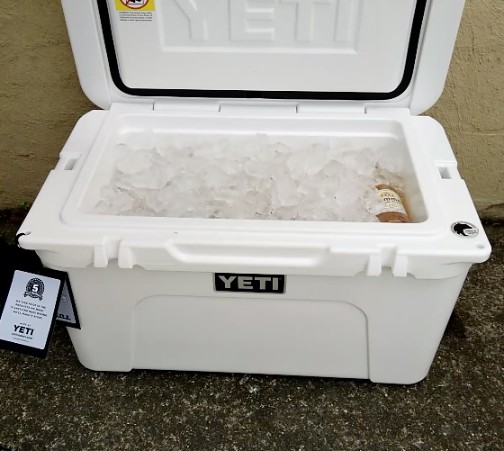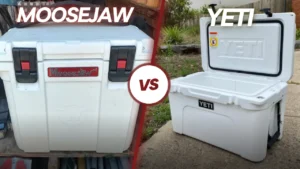Packing a cooler for a multi-day adventure can be a challenge. The ice should be sufficient to keep the food safe and the drinks cold, just like the freezer at home.
However, ice in the cooler performs differently from the ice in your freezer. You might be wondering whether ice is actually colder than your freezer at home and why items get so cold so quickly in your cooler.
Ice in a cooler is not colder than in the freezer. It starts at the same temperature as the freezer (0ºF or -18ºC) and can't get any colder than its surroundings. Ice in the cooler will progressively warm up until it reaches the freezing point (32ºF or 0ºC), then it will slowly melt. Only once all the ice has melted will the water in the cooler begin to warm up.
In this article, you'll learn how ice is impacted by its surroundings and how you can keep ice cold and frozen in your cooler for as long as possible.
Ice Temperature in the Freezer
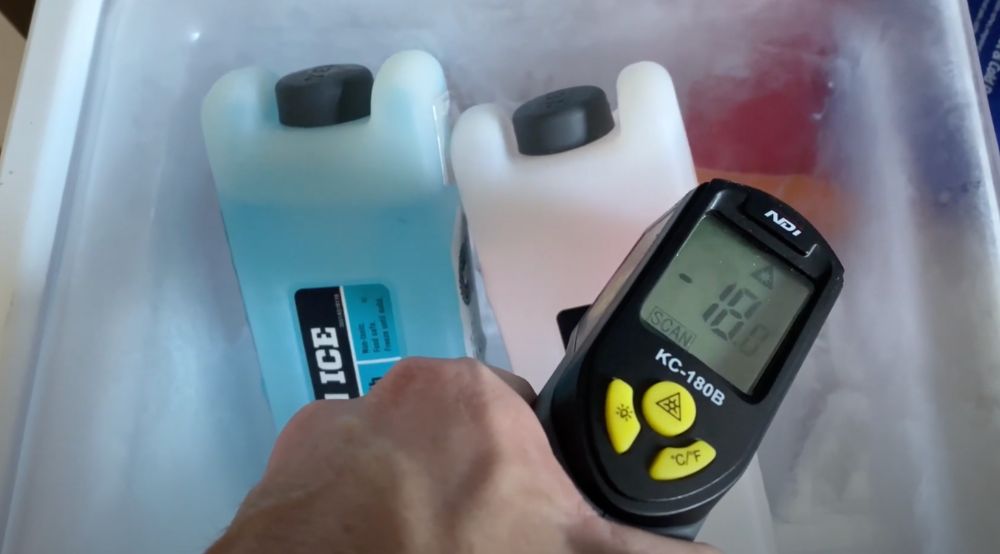
A standard home freezer operates below the freezing point of water. It is usually around 0ºF (-18ºC) in your freezer at home and any ice, food or other items you place in your freezer will eventually come down to this exact temperature.
This temperature keeps food fresher for longer and maintains the nutrients better.
Setting the freezer below the freezing point also helps offset inconsistencies when opening and closing the door. If the freezer is set at 32ºF (0ºC), the contents are more susceptible to microbe growth when exposed to warm air.
Also while water freezes at 32ºF (0ºC) many items like ice cream and other foods have a lower freezing temperature so the freezer needs to be colder to keep these items frozen.
Ice in the freezer is going to be the exact same temperature as its environment. Ice will be as cold as the freezer, but it can't get colder than its surroundings.
Putting ice from your freezer into a cooler will replicate the temperature and environment of a freezer at first but unfortunately, this temperature won't last long without any active cooling efforts.
Ice Temperature in the Cooler
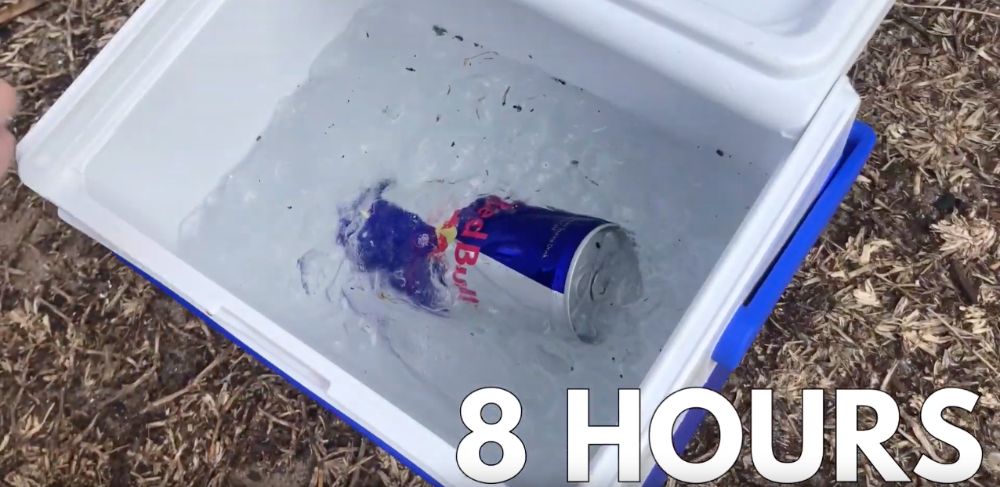
When you first put ice in the cooler, the temperature of the ice will start out at 0ºF (-18ºC). As there's no active cooling element, the temperature of the ice will start to increase over time.
After about 6-12 hours (for low end coolers) and after 1-2 days for high end coolers, the temperature of the ice will reach the freezing/melting point and some of the ice will begin to melt.
This water and ice combination will sit at exactly 32ºF (0ºC). Any extra heat that goes into the cooler will go into melting more of the ice, rather than increasing the temperature of the water.
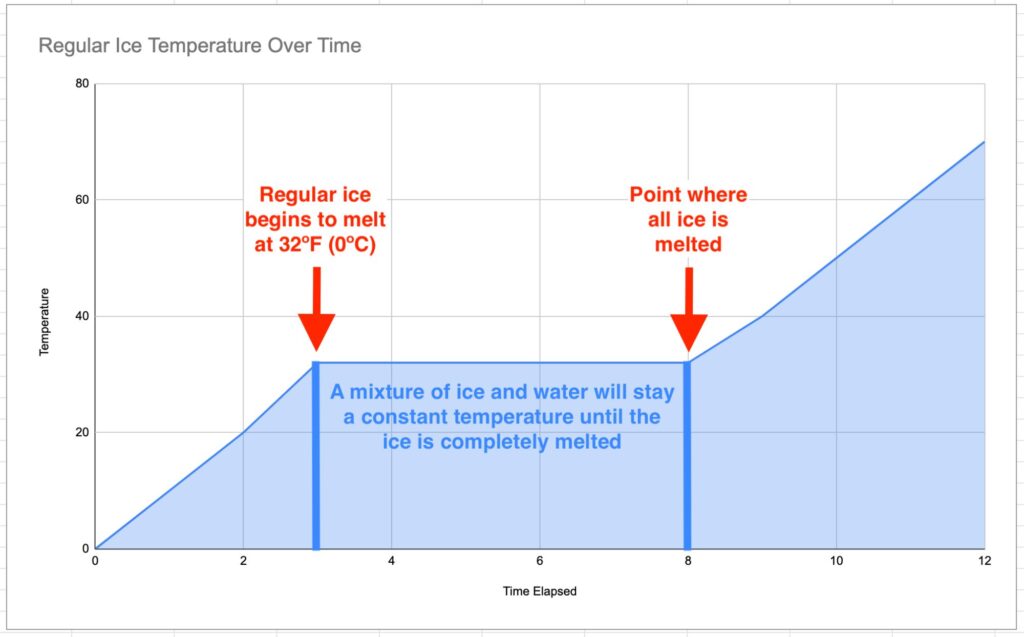
The rate at which this occurs is dependent on several factors, such as how often the cooler is opened, where it's placed, the quality and size of the cooler and how much ice you use. Usually large coolers hold ice longer than small coolers.
While Ice Isn't Colder Than A Freeze, It Can Chill Things Faster Than A Freezer Would
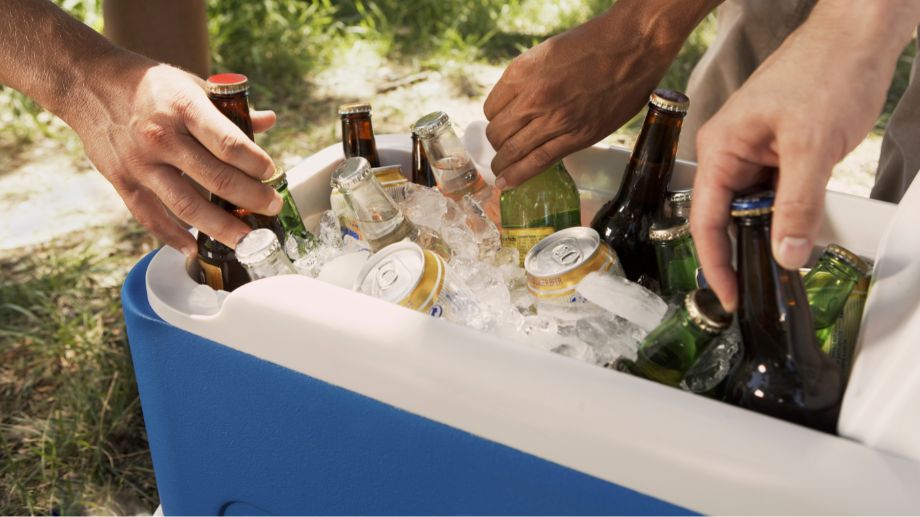
While ice in a cooler won't keep your food colder for longer than a freezer, it can chill things quicker.
A freezer works by cooling the air around the contents. This air will then work to take the heat out of your food items bringing them down to the temperature of the freezer.
However, water is MUCH MUCH better at transferring heat than air is. In fact, water is 23.5 times more efficient at transferring heat than air.
This means when you place an item in your cooler it can become extremely cold extremely quickly. It only takes 4-12 minutes to cool down drinks in a cooler but it can take hours in a freezer.
However, while it's faster to cool things down in your cooler doing so will transfer heat from that item to the ice. This will cause the ice to warm up and melt faster.
If you're trying to cool something quickly in the freezer, wrap it in a wet towel to emulate the effects. Remember to grab it before it freezes!
Should You Drain Water from the Cooler?
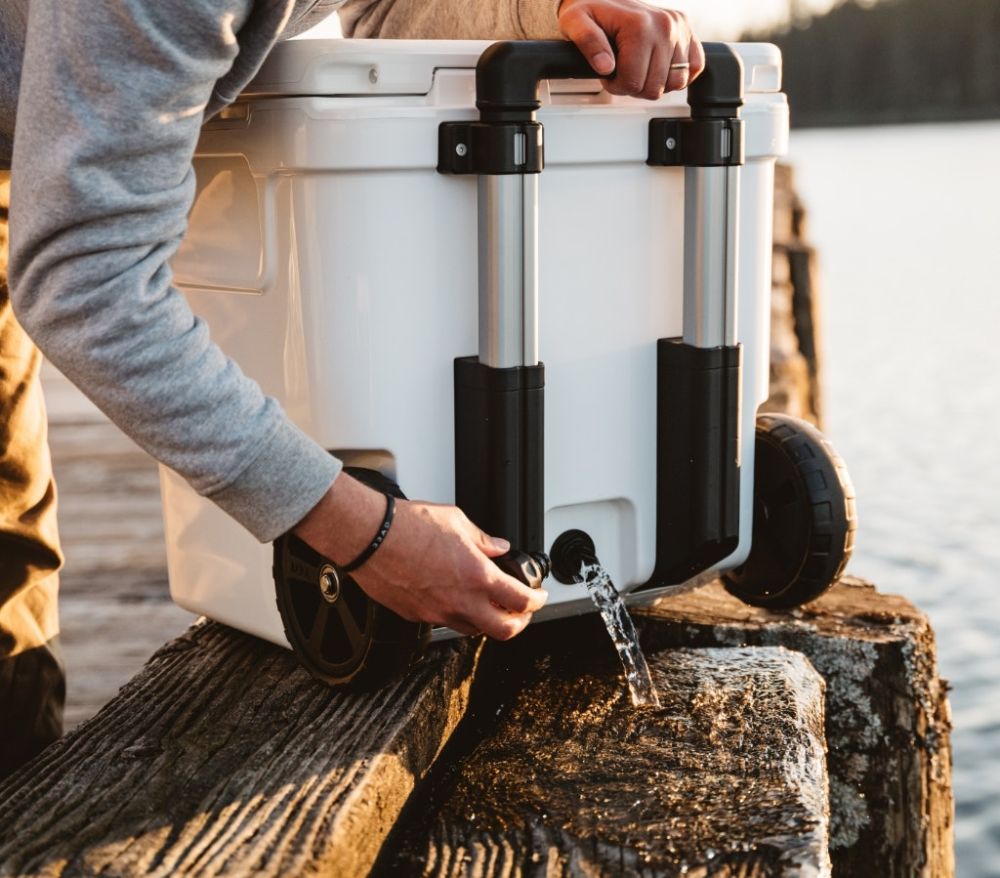
Interestingly, if you want to keep ice longer ing your cooler you should drain water from a cooler while ice is present.
Water (even cold water) is so much better at transferring heat than air so by draining the water your ice will last longer.
However, there is a tradeoff here. Having a lot of ice/water mixture allows you to keep a lot of things cold in your cooler. So even though the ice might melt faster everything will stay colder.
If you drain your cooler then the remaining ice might last longer but you might find there isn't enough ice to keep everything in the cooler completely cold and some items (especially those away from the ice) might begin to warm up to unsafe temperatures.
For the best results you should drain the water in your cooler and place fresh unmelted ice on top of your cooler.
This will help the existing ice last longer than it otherwise would but there will be enough ice in your cooler to keep everything cold.
How to Keep Ice Colder in Your Cooler
The colder the ice, the longer it will take to melt. Here's how to optimize your cooler to keep the ice cold or slow down the thawing process.
Pre-Chill Your Cooler
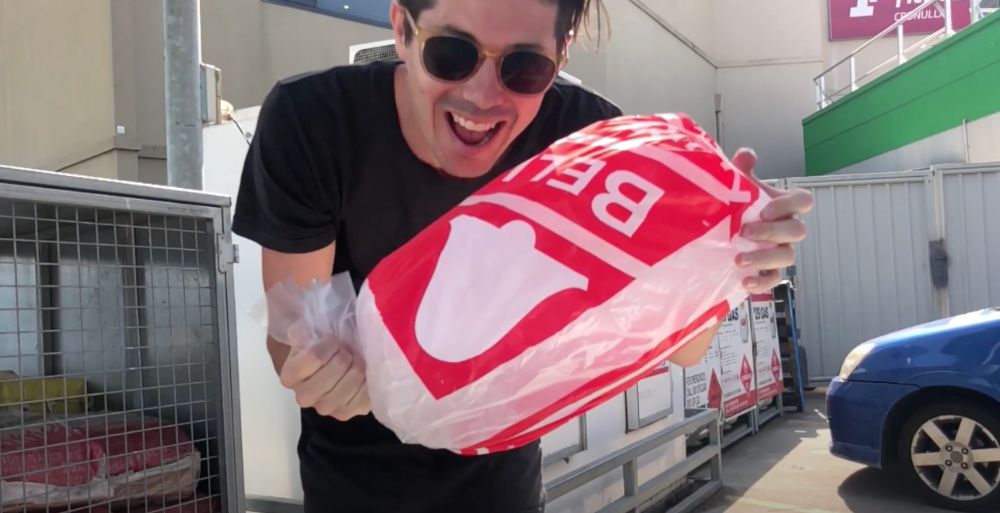
Start by pre-chilling your cooler before you start packing. Add a few ice packs or a sacrificial bag of ice to your cooler the night before you plan to use it then close the cooler. This will decrease the temperature of the walls of the cooler which can retain a lot of heat if kept in a warm space.
If ice is melting quickly in your cooler and you have a high-end cooler it's almost certainly because you didn't pre-chill it.
When it's time to start packing, replace the ice and pack the cooler with quick access items on top. Click here for my guide on how to pack a cooler properly.
Add Salt to the Ice
Adding salt to your cooler or ice packs can keep your ice colder for longer.
This science can get confusing as salt is often used to melt ice on roads during the winter. However, it's also used to make ice cream and help it freeze.
Adding salt to ice lowers the freezing point, which causes the ice to start melting. As it melts, it uses the heat energy around it to facilitate the melting process. This keeps the surrounding water at a lower temperature for longer.
You can add salt on top of ice in your cooler to lower the temperature of your cooler pretty quickly. But you can also make DIY salt ice packs for your cooler at home which will stay colder than regular ice.
If you don't want to make them yourself check out my list of the best ice packs for coolers or I recommend the Engel 20 ice pack as it is designed to stay at a low 20ºF (-6.7ºC) which will help keep items in your cooler completely frozen for longer.
This ice pack is designed to stay much colder than regular ice.
At 20ºF (-6.7ºC) it can keep food and ice cream frozen in your cooler for longer.
Don't Overpack Your Cooler
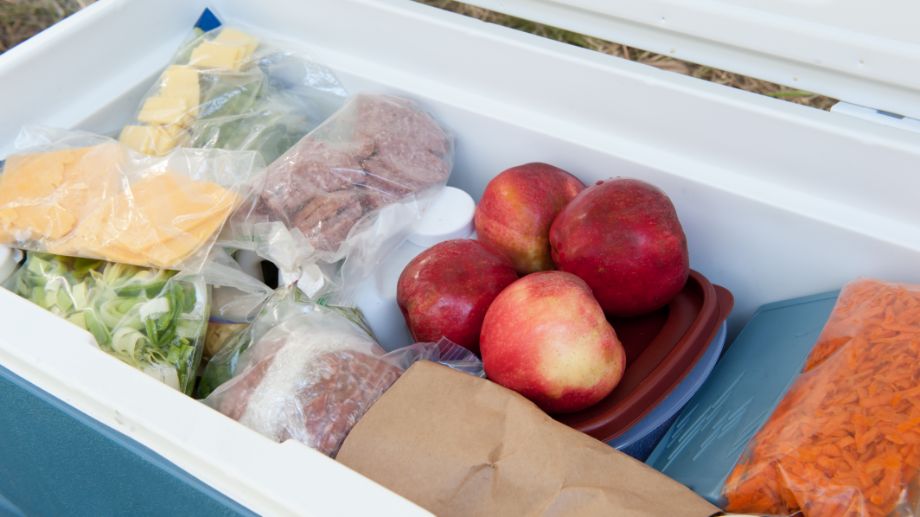
Your cooler should have a high ratio of ice to food or drinks. Ideally, you'll have two parts ice for one part food.
While freezers operate better when full of food, the same can't be said for coolers. Eliminating empty space is a must, but there should still be plenty of ice.
Use Ice Blocks Over Cubes
Ice blocks will last longer than regular ice cubes and will also keep the cooler colder for longer. Ice blocks have less surface area than cubes, and the core is insulated.
Add ice blocks to the bottom of your cooler, then use cubes on top for optimal cooling.
Click here for some easy ways to make block ice for your cooler
Store in a Cool Environment
Set your cooler out of the sun in a cool environment to extend the ice's lifespan.
If you don't have a shady spot, you can bury your cooler in the ground with the top exposed. Alternatively, cover it with foil (shiny side out) to reflect the sun away from it.
Use Towels to Fill Space
Fill empty space in your cooler with a cold towel or cooler pad.
The towel will insulated the ice and your food/drinks and will help everything stay cooler for longer than empty air. This simple trick will help slow down the thaw time.
Shipping supply stores and camping stores also have cooler pads that you can soak in water and freeze for this purpose.
You can also place a cool, wet towel over the cooler if you can't bury it or provide shade. The water from the towel will evaporate providing an evaporative cooling effect.
Keep Your Cooler Cool
While you can't make ice colder than your freezer, you can optimize your cooler to keep food and drinks cold for as long as possible. Use the strategies listed above to keep your cooler contents cool.

